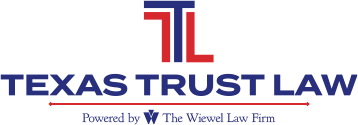
What are Home Caregiving Options for Parents?
At least 2.4 million U.S. workers provide in-home personal and health care for older adults and people with disabilities. That number has more than doubled since 2010, according to PHI, a New York–based nonprofit advocacy group that works to improve the quality of direct-care services and jobs. What are the best home caregiving options for your parents?
AARP’s recent article entitled “How to Hire a Caregiver” says that a shift in long-term care from institutional settings like nursing facilities to those aging in place in their own homes and communities has fueled the growth. This is also likely to continue as the population ages. The U.S. Census Bureau projects that the 65-and-older population, which was just over 54 million in 2019, will grow to 94.7 million by 2060.
There are several types of paid in-home caregivers that provide a range of services.
- Personal Care Aides. PCAs aren’t licensed and have varying levels of experience and training. They serve as helpers and companions. They can provide assistance with bathing, dressing and do some housekeeping, as well as transportation to shopping and appointments. Training requirements for caregivers vary by state, and some states have no formal standards. This will be an out-of-pocket expense because Medicare or private health insurance typically doesn’t cover them.
- Home Health Aides. HHAs monitor the patient’s condition, check vitals and assist with activities of daily living, such as bathing, dressing and using the bathroom. HHAs also provide companionship, do light housekeeping and prepare meals. This group must meet a federal standard of 75 hours of training. Their training and certification varies by state.
- Licensed Nursing Assistants (LNAs) and Certified Nursing Assistants (CNAs). LNAs and CNAs observe and report changes in the patient, take vital signs, set up medical equipment, change dressings, clean catheters, monitor infections, conduct range-of-motion exercises, offer walking assistance and administer some treatments. Any medical-related tasks are performed as directed by a registered nurse (RN) or nurse practitioner (NP). CNAs also provide help with personal care, such as bathing, bathroom assistance, dental tasks and feeding, as well as changing bed linens and serving meals. As with home health caregivers, federal law requires nursing assistants to get at least 75 hours of training, but some states have other requirements.
- Licensed Practical Nurses (LPNs). These skilled nursing providers have to meet federal standards for health and safety and are licensed by states. They evaluate, manage and observe a senior’s care and provide direct care that nonmedical and home health aides can’t. Their tasks could include administering IV drugs, tube feedings, and inoculations; changing wound dressings; and educating caregivers and patients. Some LPNs are trained in occupational therapy, physical therapy and speech therapy. Medicare covers home health skilled nursing care that is part-time or intermittent, doctor-prescribed and arranged by a Medicare-certified home health agency.
- Registered Nurses (RNs). This group has a nursing diploma or an associate degree in nursing. They’ve passed the National Council Licensure Examination and have satisfied the other licensing requirements mandated by their state’s nursing board. RNs provide direct care, administer medications, advise family members, operate medical monitoring equipment and assist doctors in medical procedures.
These are some of the best home caregiving options for your parents. Work closely with an elder law attorney to ensure you have all of the options available to you and your family. If you would like to learn more about home care, and other long term care issues, please visit our previous posts.
Reference: AARP (Sep. 27, 2021) “How to Hire a Caregiver”
Photo by Alex Green from Pexels















